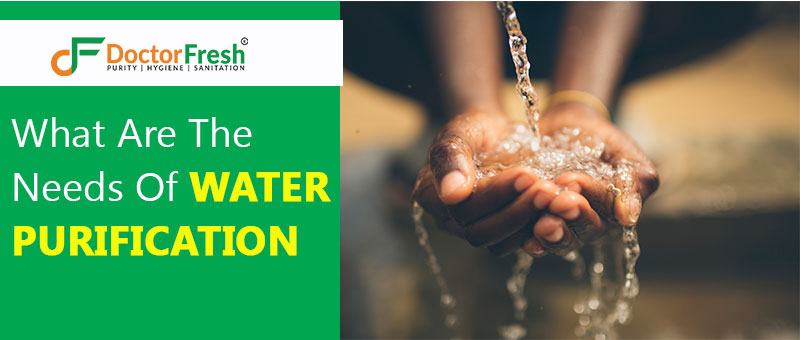Water is the most important compound on this planet; without water, everything would cease to exist.
71% of our planet is covered with water, and 96.5% of water comes from the oceans, which is boldly stated as not fit for drinking. There are very few freshwater sources, which in turn brings us back to the agenda of water purification.
Most of the freshwater sources which we have does not provide us potable water, which raises the question of identifying different techniques to make water more potable because, according to our human organ system, we do need ultra-purified water for our body to function well and be free from a deadly waterborne disease which can easily become life-threatening.
Purified water not only keeps the gut healthy, but it also provides various benefits to our skin, mind, and quality of life as well; it also prevents the passing of congenital disabilities to our upcoming generation and strengthens our immune system as well. Water is the holy elixir of life only when it is properly purified and is free from the deadly disease-causing microorganisms.
Types of Viruses Commonly Found In Water...!
These viral pathogens have a moderate to high health risk. As classified by WHO, the types of viruses are adenovirus, retrovirus, norovirus, E virus. Other viruses such as coronaviruses and influenza viruses have also been thought to be transmitted through water, but there is no research or studies to support the claim. The most common symptoms caused by waterborne viruses are Gastroenteritis, Diarrhea, Abdominal cramping, and nausea.
How To Remove Viruses From Drinking Water?
As learned above, it's very important to have virus-free water going into our bodies. As our ancient use to disinfect water in earlier times still holds the same importance in these recent times, i.e., is boiling water, a temperature rise is the most effective way to kill these deadly pathogens.
But as we are thriving in such a fast-paced world, our ways to disinfect water should also be a bit convenient and fast-paced.
The second most effective way is to disinfect water with chlorine or iodine, but this process may not be the best choice for drinking water.
The most convenient and the most realistic way of removing viruses and bacteria from drinking water is through UV light disinfection; without the hassle of boiling water and chemicals, 99.99% of viruses/bacteria are killed in this particular way. Adding to other advantages, this is the most economical way to disinfect water which is easily reachable to the masses.
Adding to the above process Reverse Osmosis (RO) is another convenient process to disinfectant water. In this particular process, the water flow is revered as opposed to its natural flow in the process of Osmosis so that the water passes from a more concentrated solution to a dilute solution through a semipermeable membrane.
Advanced Methods Used In Purification Of Drinking Water
#1. Sedimentation Filtration
As the name itself suggests, this is a simple procedure of filtration. In this process, large impurities present in drinking water are filtered out as they form a layer of sediment, i.e., a layer of larger impurities such slime, dirt, grit sand, etc.
This is one of the basic filtration techniques, mostly considered the initial step in the purification process. The filters used for this purification method need to be manually removed after they have reached their saturation level.
Initially, at-home Doctor Fresh water filters were based on this purification technique, but as the variety of impurities increases, this method cannot be a one-stop solution for safe drinking water.
#2. Ion Exchange
This water purification process mostly helps in softening water which means removing sodium-potassium ions from the water, which makes them unfit for drinking. In this process, the exchange of ions or the charge is the main motive, to begin with. The exchange of ions is made possible by passing the water through an ion-exchange resin, displaces the weakly charged metallic ions (sodium and potassium ions) through electromagnetic attraction.
#3. Activated Carbon
The use of activated carbon is always an advantage for removing impurities from any substance. Carbon filtration is done through adsorption, where the water is passed through granular carbon beds. Activated charcoal (Carbon) filtration does an excellent job in removing chlorine from the water and carcinogenic elements such as trihalomethanes (THMs).
#4. One Micron Pre-Filter
This is the very basic step in water purification. In this process, water is passed through multiple filters with a pore size of 1 Micron. When the water passes through such a fine pore size water filter, most microorganisms such as viruses, bacteria, cryptosporidium, and various other harmful bugs are eradicated from the water, making it fitter and safer for drinking and other purposes.

